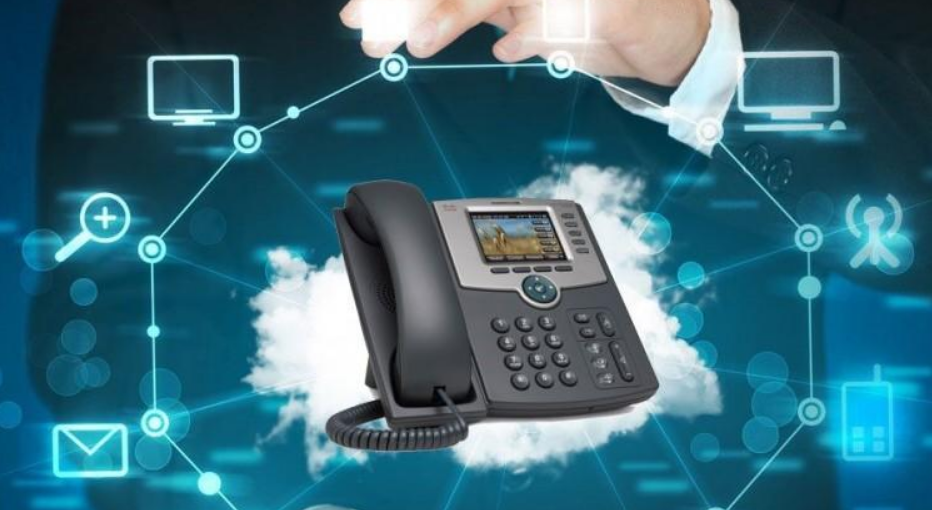IP telephony - what is it and how does it work?
IP telephony: what is it?
City telephone numbers, rotary or push-button devices installed in subscribers' apartments are a thing of the past. They have been replaced by Internet telephony, without which it is impossible to imagine calls in messengers such as WhatsApp or Telegram.
IP telephony is ideal not only for private but also for commercial use, it helps to optimize the enterprise's expenses related to communication, introduce new functions, and improve the overall quality of customer service. What is this technology? What are its advantages and features?
Concept and principle of operation
In simple terms, IP telephony can be described as telephone communication using the Internet. This eliminates the need to lay long cable lines, purchase multiple devices, and simplifies the structure without compromising the quality of communication. The only thing you need is reliable Internet access, ideally via a dedicated line.
The algorithm for the operation of this communication method can be represented by the following stages:
- Transformation of a voice signal into a digital information stream. This task is performed by codecs that not only transform signals, but also compress them to save traffic and use the channel capacity more rationally.
- Breaking the total information flow into packets. This scheme increases overall reliability and transmission speed, eliminating the need to resend all data in the event of a failure.
- Transfer of information. IP telephony works due to the RTP and SIP protocols. They help to start a communication session and successfully complete it.
- Processing of information. The software and hardware components of the system ensure clear data routing and distribute it correctly between subscribers.
- Delivery. Packets are transmitted via a dedicated channel. The end device undergoes a reverse transformation, from digital to analog, which allows you to hear the voice of the interlocutor.

Comparison with analog telephony
IP telephony is a much more advanced technology compared to analog. It uses available information transmission channels much more efficiently and does not overload them. It is much easier to upgrade the system, new subscribers can be added not at the hardware level, but at the software level, reconfiguration takes a few seconds. The purity of the signal transmitted in digital form is incomparably higher than that of analog, the voice sounds cleaner and clearer.
Advantages
The mass transition of enterprises to IP telephony, its increasingly active use by individuals and commercial structures, is explained by the following:
- Cost. The implementation of the system does not require the formation of a complex infrastructure from scratch, laying cables, purchasing specialized equipment. IP telephony is easily integrated into an existing network that every company has.
- Ease of modernization. The system is easy to adapt to the growing needs of the business, supplemented with new hardware, software modules. Complex reconfiguration, temporary suspension of work, significant investments in such cases are not required.
- High quality of data transmission. No clicks, crackles and other things that are typical for analog telephone lines. The voice is transmitted clearly, distinctly, all the information can be learned the first time, without repetition, which saves the interlocutors' time.
- Multi-channel. One line can be used by enterprise specialists to work with several clients at once.
- Mobility. IP telephony supports not only stationary devices located in the office, but also allows adding mobile numbers of employees. Thus, they always stay in touch, even on business trips they can assist in solving urgent issues.
- Functionality. IP telephony is a young system, so it takes into account all the needs of modern enterprises, offers them a maximum of valuable opportunities. For example, synchronization with CRM is available, automatic call recording to monitor the work of operators.
There are essentially no pronounced disadvantages. The main thing is to choose a provider that provides a stable connection to the Internet so that the system consistently maintains operability. The second significant point is security. It is important that encryption algorithms are used when transmitting data, thanks to which interception becomes meaningless - intruders will not be able to decode the signal.
The most effective for ensuring the security of IP telephony are SRTP protocols, firewalls, algorithms that protect against fraud attacks, when the system is overloaded and collapses with a huge number of calls.
Hardware and software
The standard device for implementing IP telephony is a phone equipped with an RJ-45 port or a wireless module for connecting to the Internet. Like a standard analog, such a phone is suitable for making voice calls, but in addition - for interacting with a PC, holding mass conferences.
An alternative solution is a softphone, a program that needs to be installed on a laptop, PC, tablet or smartphone. Versions are available for various operating systems, from Windows to Android and iOS, the application turns the device into a full-fledged analogue of an IP phone.
The following components are also used:
- Gateways. Allow you to connect standard phones to IP. The task of the gateway in this case is to transform the analog signal into digital and back.
- Network devices. Increase the stability of the connection, the quality of signal transmission, minimize delays, eliminate breaks. The set of equipment is determined by the network structure, modems, wireless routers can be used.
- Servers. Their task is to process and store information. Depending on the specifics of IP telephony, both the enterprise's own servers and virtual, cloud servers can be used.

Telephony levels
IP telephony operates at several levels, the main one being physical, at which the signal is transmitted over a specific medium, be it coaxial, copper, or fiber optic cable. The second level is the channel level, which provides communication between the upper and lower levels. It is divided into two subcategories:
- MAC. Provides clarity of interaction with the physical level;
- LLC. Necessary for communication with the network level.
Network layer
The main task of the network layer is routing, distribution of data packets. The main hardware required for its implementation are routers or gateways, thanks to which a standard analog phone can be turned into an IP device. Depending on the modification, routers can support the following functions:
- Sending standard voice messages;
- Sending fax messages;
- Sending text messages in SMS format. For this, the device must allow the installation of a SIM card.
The network layer is also necessary to designate the priority of data packets, send them in accordance with a certain sequence, rationally use the channel bandwidth, eliminate signal transmission delays, and maintain its highest possible quality.
Transport layer
The function of the transport layer is to transmit information packets without losses and delays. As a rule, two protocols of this layer are used in IP telephony:
- UDP. The peculiarity of the protocol is the absence of confirmation of successful delivery of packets. The specificity of voice communication is such that the loss of individual packets is quite acceptable, which cannot be said about delays. UDP algorithms optimally meet this requirement.
- RTP. The protocol can be used independently, however, it demonstrates maximum efficiency in combination with the previous one. It determines the category of information being transmitted, assigns numbers to packets, and orders them. Such multifunctionality has a positive effect on the signal quality.
Protocols and codecs
The optimal protocol for setting up stable IP telephony is SIP, introduced in 2000. It is extremely versatile, allows you to easily set up the system, optimize it for both voice and video calls.

Suitable codecs are G.711 and G.729. The first is recommended for maximum data compression, rational use of available channel bandwidth, the second - for the best sound quality, clear voice transmission.
Benefits for business
The main benefit of IP telephony for an enterprise is reduced communication costs. In this case, Internet communications are used to transmit information, the costs are much lower than in the case of classic lines. It is also necessary to note some other significant advantages:
- Increase in customer requests. Support for multi-channel mode eliminates the situation in which the calling client gets a busy line. The call will be automatically redirected to a free operator, or a voice assistant will be activated, the client will be able to resolve issues even without a dialogue with a “live” consultant.
- Increase in the authority of the organization. IP telephony allows the use of federal numbers, which customers trust much more than simple city numbers.
- Control over the work of personnel. Management can activate the call recording function, selectively listen to them to check the operators' qualifications, professionalism in performing their job duties, and literacy of consulting.
- Saving numbers when moving. IP telephony is not tied to a specific point, so when moving, you can transfer all numbers, continue using the system, avoid losing customers and other troubles.
Auxiliary functions
IP telephony can be synchronized with CRM, which allows you to automate the execution of most routine tasks that take up the energy of specialists. Synchronization with CRM provides automatic creation of a card with customer contact information after the end of the conversation, specify additional information, transaction status, the need for a call back.

IP telephony allows the use of a voice menu, a virtual assistant, thanks to which the client can resolve issues without contacting a “live” operator, select the necessary department.
Auxiliary functions based on actively developing artificial intelligence systems are becoming increasingly widespread. For example, AI can eliminate interference, improve the audibility of the voice signal, automatically analyze calls, identify errors, and operator incompetence.
Summing up
IP telephony surpasses its classic counterpart in all respects. Its implementation is a rational solution for any commercial structure that wants to improve commercial performance, reach new heights in business, increase the level of customer service, and optimize the budget.
Answers to popular questions
How soon can I start using the service?
The user account is opened immediately after the application is submitted.
Immediately after making the payment, you can start using the service immediately.